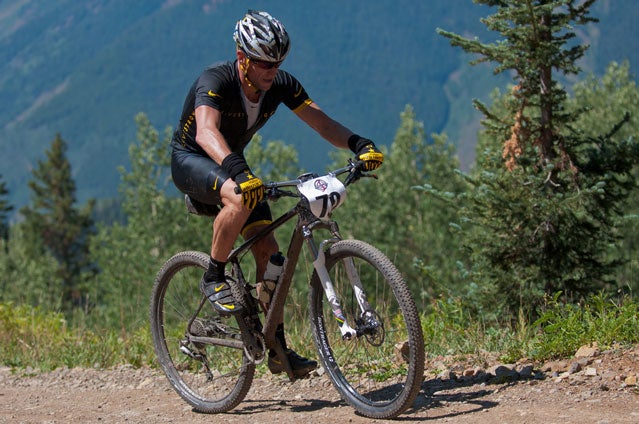You’re not alone in wondering what doping could do for you. At the end of July, the put the tally of amateur cyclists busted for juicing in the U.S. at 10, but surely many more escaped testing. Two of those convicted were using EPO, which stimulates the production of oxygen carrying red blood cells, and at least one of them was doing T, or testosterone, the muscle-building hormone that landed Floyd Landis in hot water and eventually led to his disqualification as the 2006 Tour winner.
Doping can certainly help you go faster, stronger, longer. But the price you pay for God-like athletic abilities can be steep. , for instance, can cause hypertension, enlarged male breasts, and decreased ejaculatory volume. In women, it can also cause excess body hair, and deepening of the voice, among other potentially irreversible side effects. EPO is traditionally used to treat patients with chronic kidney problems for anemia and can cause fatal blood clots.
In an interview with Bill Gifford, Tyler Hamilton also said that doping won’t make up for a lax training regimen: “If I had to take one thing out, the doping or the training or the diet, it would be the doping. Hands down.” Add that to the cost of procuring drugs, trusting the shady doctors who will provide them, and living in constant fear of being found out, and it hardly seems worth it. But none of that stopped several writers and riders from seeing for themselves just how awesome their juiced up bodies could be. The following is a short selection of stories documenting the average Joe’s descent into the dark side of sports. Check them out for first-hand accounts of what it’s really like to dope.
Drug Test: EPO
The seminal author-as-guinea pig doping story, written by Stuart Stevens and published in ���ϳԹ��� in 2003.
I remained skeptical about all the drugs until March 29, when I rode an event along the central coast of California, the Solvang Double Century, at what for me was a fast and hard pace, finishing in around 11.5 hours. About 10 hours in, it dawned on me that something was definitely happening. Sure, I’d been training hard, but I’d done enough of that to know what to expect. All around me were riders—good, strong riders—who looked as worn out as you’d expect after 10 hours in the saddle. I was tired, but I felt curiously strong, annoyingly talkative and fresh, eager to hammer the last 40 miles. The last time I’d ridden 200 miles, I felt awful the next day, like I’d been hit by a truck. After the Solvang race I woke up and felt hardly a touch of soreness. I also felt like I could easily ride another 200, and I realized that I’d entered another world, the realm of instant recovery. I’ll be frank: It was a reassuring kind of world, and I could see why people might want to stay there.
Author Andrew Tilin was so curious about what it’d be like to dope, he did it himself. When USADA caught wind of his experiment in the spring of 2011, they for two years. Read the summary of his doping adventures that he wrote for ���ϳԹ��� here.
Near the end of the hilly course’s third lap, however, something happened: I felt a subtle but unmistakable second wind. At the top of a rise, I turned around and realized that our original group of 30 riders was now a group of seven. Everyone else, as bike racers say, was off the back. I finished sixth, which for me was a great result.
Do I credit my training? Luck? The placebo effect? Those were factors, but so, I believe, was the testosterone. As usual, I had applied it, as a topical cream, to my inner thighs early that morning. I knew firsthand what any number of pros would tell you if they could: the stuff is strong medicine. Once you feel what it can do, it’s hard to resist.
Amateur cyclist David Anthony, 45, made headlines in May 2012 when he tested positive for EPO at a Gran Fondo in New York. First, he issued at . Then, he told the story of his drug use to Velo News.
“I had this bad justification, which was, ‘all I’m doing is leveling the playing field,'” he said. Anthony worried his new team wouldn’t keep him on the roster if he didn’t produce results. He sought out HGH, which he said was easy to get. It cost about $500 a month, but it was something Anthony was willing to pay.
“I noticed, right away, that I was recovering better,” he said. “I was using the tent, I had a higher hematocrit … I was able to train harder, and recover from those harder training days.”
“It was this very slow progression of awfulness. That was the beginning of there being two Davids.”
If we missed any juicing stories that you love, let us know in the comments below.


